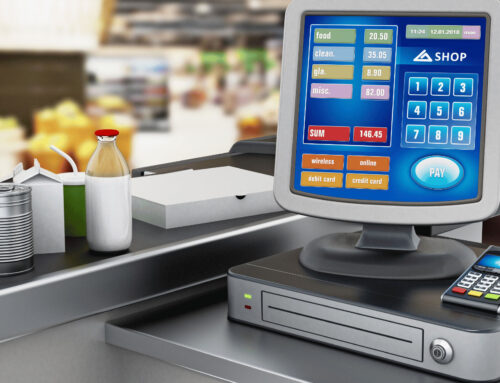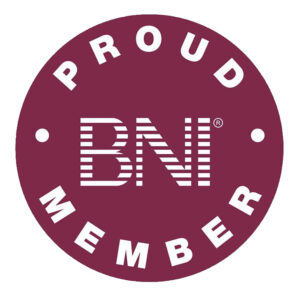Navigating the Maze of Payment Systems in Online Ordering
Online ordering has swept across the globe, revolutionizing the way we shop and interact with businesses. A key component of this transformation is the myriad of payment systems available. The following article delves deep into the heart of online ordering, focusing on the payment systems that facilitate our transactions.
The Advent of Online Ordering
Online ordering took the world by storm with the advent of the internet. As technology improved, so did our way of shopping. No longer confined to the four walls of brick-and-mortar establishments, we've transitioned to a more digital lifestyle, where almost anything can be purchased with a few clicks.
Navigating Online Payment Systems
When it comes to online shopping, the payment process is where the rubber meets the road. A plethora of options are available, from credit cards to digital wallets and cryptocurrencies. These payment systems are the engines that keep the online marketplace running smoothly. But how do they work? Let's break it down.
The Ubiquity of Credit and Debit Cards
Credit and debit cards are the lifeblood of online commerce. They're the go-to payment method for most online shoppers due to their convenience and wide acceptance. Card payments work through a complex network of banks and payment processors, securely transferring funds from the customer's account to the merchant's.
Digital Wallets: A Seamless Payment Experience
Digital wallets, such as PayPal and Google Wallet, have made online shopping a breeze. By storing payment information securely, they provide a fast and frictionless checkout process. With just a username and password, you can pay for your purchases without entering your card details every time.
Direct Bank Transfers and E-checks
Direct bank transfers and e-checks offer a more traditional route for online payment. Customers can pay directly from their bank account, bypassing the need for a credit or debit card. While this method may not offer the same speed as digital wallets or cards, it can provide a sense of control and familiarity for those wary of newer payment technologies.
Mobile Payments: The Rise of a New Era
Mobile payments apps like Venmo and Zelle have ushered in a new era of online ordering. Offering the convenience of paying with just a tap on your smartphone, mobile payments are quickly gaining popularity. They integrate seamlessly with other mobile services, such as contact lists and messaging, making the payment process more social and interactive.
Cryptocurrencies: The Future of Online Payments?
Cryptocurrencies, such as Bitcoin and Ethereum, have created a buzz in the online payments landscape. Based on blockchain technology, they offer a decentralized method of payment, free from government regulation and banking systems. While not as widely accepted as other payment methods, they are paving the way for a new future in online commerce.
Prepaid Cards and Gift Cards
Prepaid cards and gift cards provide an alternative for those who don't have access to traditional banking services or prefer not to use them for online purchases. These cards come pre-loaded with funds and can be used like a regular debit or credit card, making them a versatile and inclusive payment option.
Invoice Payments: A Nod to Traditional Commerce
Invoice payments bring the familiarity of traditional commerce into the digital realm. Customers are provided with an electronic invoice that they can pay at their convenience, often through a bank transfer or a digital wallet. This option is particularly prevalent in B2B transactions, where larger sums are typically involved.
Multi-currency Payment Systems
In an increasingly globalized world, multi-currency payment systems are a must for online businesses. They allow customers to pay in their own currency, while the merchant receives funds in theirs. This eliminates the hassle of dealing with foreign exchange rates and provides a more straightforward shopping experience for international customers.
Security in Online Payment Systems
Security is paramount when it comes to online payments. Payment systems employ various measures, such as encryption and secure socket layer technology, to ensure the protection of sensitive data. Customers need to trust that their financial information is safe, or they won't complete the purchase.
The Role of Payment Processors
Payment processors play a crucial role in online transactions. They act as intermediaries between the merchant and the customer's bank, facilitating the transfer of funds. Choosing the right payment processor can have a significant impact on the success of an online business, affecting factors such as transaction speed, security, and cost.
Navigating Fees and Charges in Online Payments
While online payment systems offer a wealth of convenience, they often come with associated fees and charges. These can include transaction fees, interchange fees, and currency conversion fees. Both customers and businesses need to be aware of these costs to avoid unpleasant surprises.
The Impact of Payment Systems on Customer Experience
The choice of payment system can significantly impact the customer's experience. A seamless checkout process, with a variety of payment options and clear pricing, can enhance customer satisfaction and lead to repeat business. On the other hand, a confusing or limited payment process can lead to abandoned carts and lost sales.
Advantages of Diversified Payment Options
Offering a wide range of payment options can provide several benefits for online businesses. It can cater to a broader customer base, increase sales, and improve the overall customer experience. After all, the easier you make it for customers to pay, the more likely they are to complete their purchase.
Disadvantages of Multiple Payment Methods
However, offering multiple payment methods is not without its challenges. It can lead to increased costs for the business, both in terms of transaction fees and the resources required to manage and secure the different systems. It can also increase the risk of fraud and other security issues.
The Future of Payment Systems in Online Ordering
As technology continues to evolve, so too will the payment systems we use for online ordering. We can expect to see the rise of biometric payments, further integration of AI in payment processing, and continued development of blockchain technologies. The future of online payments is a dynamic and exciting frontier.
Picking the Right Payment System for Your Business
When it comes to choosing a payment system for your online business, there are several factors to consider. You need to understand your customers' preferences, evaluate the costs involved, and consider the level of support provided by the payment processor. Remember, the best payment system is the one that meets your business's unique needs and goals.
Overcoming Challenges in Online Payment Systems
Despite the convenience they offer, online payment systems are not without their challenges. From managing security risks to ensuring regulatory compliance, businesses must navigate a complex landscape. However, with the right strategies and tools, these challenges can be effectively managed.
Regulatory Compliance in Online Payment Systems
Ensuring regulatory compliance is crucial for any business using online payment systems. From PCI DSS standards to data protection regulations, businesses must stay abreast of the rules governing their operations. Failing to do so can lead to hefty fines and damage to the business's reputation.
How Consumers Can Protect Their Online Payments
While businesses bear much of the responsibility for securing online payments, consumers also play a vital role. By employing practices such as strong password use, two-factor authentication, and secure internet connections, consumers can help protect their financial information and shop online with peace of mind.
The Intersection of Payment Systems and Delivery
The payment system chosen can often influence delivery options in the world of online ordering. Traditional methods such as 'cash on delivery' or 'pay-on-pickup' may limit delivery choices or lead to delays, whereas digital payments can enable smoother and faster delivery processes.
The Role of Payment Systems in Subscription Services
In the realm of subscription services, the choice of payment system is crucial. The need for recurring payments requires systems that can handle automatic debits and manage changes in customer payment information. The right system can make the subscription process a breeze for both the business and the customer.
Understanding Chargebacks in Online Payments
Chargebacks are a potential risk in online transactions, where a customer disputes a charge and seeks a refund from their bank. Understanding the chargeback process and having a clear refund policy can help businesses manage this risk and maintain healthy relationships with their customers and payment processors.
The Environmental Impact of Online Payment Systems
The environmental footprint of online payment systems is an often-overlooked aspect. Digital transactions may reduce the need for physical materials, but they also require energy to power servers and process transactions. As businesses and consumers, we must be aware of this impact and seek to make sustainable choices in our online shopping habits.
FAQs
What are some common types of online payment systems? Common types include credit and debit cards, digital wallets like PayPal, direct bank transfers, mobile payments apps such as Venmo, and cryptocurrencies like Bitcoin.
Why is security crucial in online payment systems? Security is crucial to protect sensitive financial information and maintain customer trust. If customers don't feel their data is safe, they won't complete the purchase.
What is the role of a payment processor in online payments? Payment processors act as intermediaries between the merchant and the customer's bank, facilitating the transfer of funds. They play a crucial role in transaction speed, security, and cost.
What are some advantages and disadvantages of offering multiple payment methods? Advantages include catering to a broader customer base and increasing sales. Disadvantages can be increased costs for the business and higher risk of fraud.
How can consumers protect their online payments? Consumers can use strong passwords, two-factor authentication, and secure internet connections to protect their financial information. They should also be wary of phishing scams and only shop on reputable websites.
How do online payment systems impact the environment? While digital transactions reduce the need for physical materials, they require energy to power servers and process transactions. As a result, they contribute to energy consumption and electronic waste.
Navigating the maze of payment systems in online ordering can be complex, but with a solid understanding of the different options and how they work, both businesses and consumers can make informed choices. As technology continues to evolve, so too will the landscape of online payments. The key to staying ahead is to keep learning and adapting.












